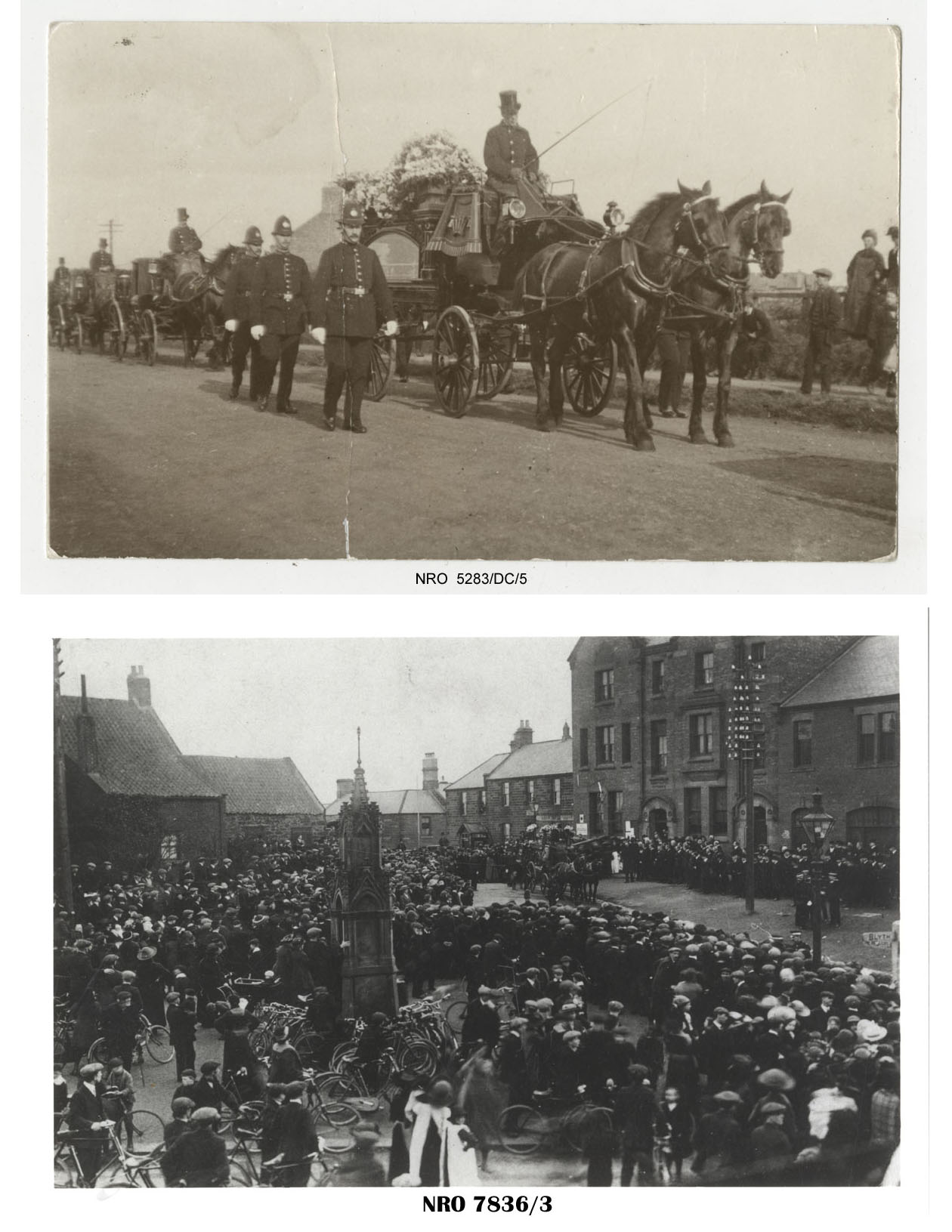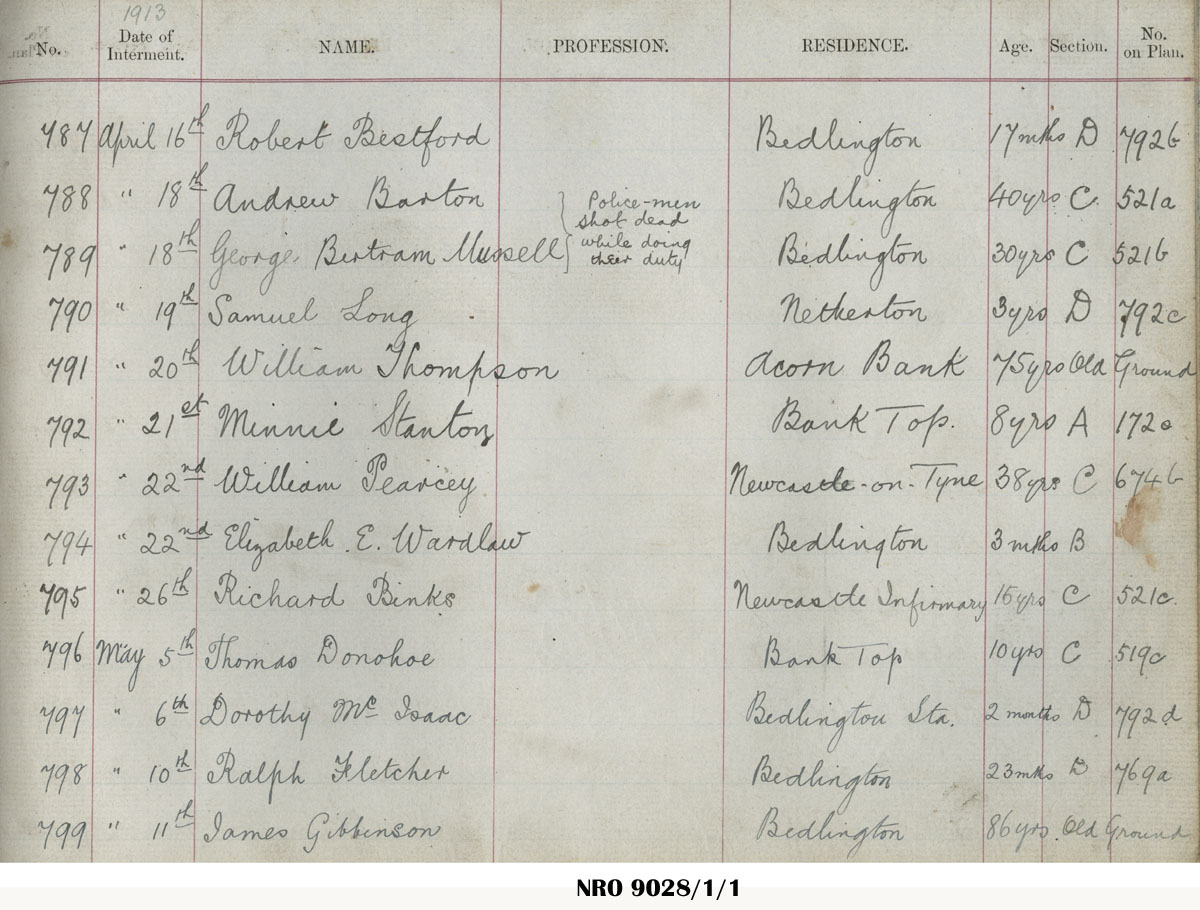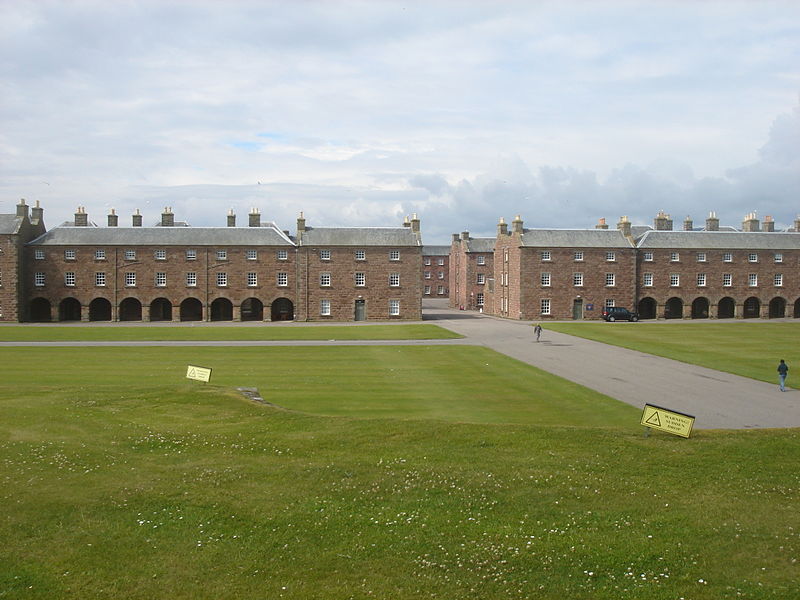On 15th April 1913, James Wood Irons, owner of The Sun Inn public house in Bedlington went to the premises to terminate the employment of his manager John Vickers Amos due to deficiencies in stock and takings. Irons had with him Mr Grice who he intended to make his new tenant manager. Also present at the inn was Mrs Grice. Amos became threatening and produced a gun resulting in the horrific murders of three innocent people. P.C. George Bertram Mussell (30) Sergeant Andrew Barton (40) and Mrs Sarah Ellen Fenwick Grice (33). John Vickers Amos fled but was captured and arrested the same day. He was found guilty of murder and was hanged on 22 July 1913. Northumberland Archives holds the inquest report and witness statements relating to the murder case.

James Wood Irons – Owner of the Sun Inn
In his statement Mr Irons claimed he planned to install Richard Grice of Seghill as his new tenant manager after deciding to terminate Mr Amos’s tenancy. On 15 April 1913, he entered the inn by the back door and went into the smoke room. He met Amos who had by this time guessed that his position was under threat. Amos asked about getting his bond back and was told that it depended upon the success of the stocktake. Irons said he then left the inn and went to the train station to meet Mr Grice and a lady called Mrs Craggs. All three went to the inn and entered by the back door then went into the smoke room. Irons commenced with the stocktake and asked Mr Grice to step into the bar and take charge which made Amos angry. Irons reported the matter to Inspector Culley and just before 2pm P.C. Mussell arrived. Irons claimed P.C. Mussell talked to Amos and told him to keep cool.
Richard Grice – New Tenant Manager of the Sun Inn
Richard Grice claimed that he saw Amos carrying an item which he put into a cupboard in the kitchen but he was unable to confirm if it was a firearm. Mr Grice said that he heard P.C. Mussell ask him if he had a firearm in the house and he said no. After the shootings had occurred, Grice stated that he saw Amos outside the front of the inn pointing the gun at the door. Later on he claimed to hear a man shout from outside the window that Amos had gone over the fields.
George Amos – Son of John Vickers Amos
George gave a statement to police stating that he was he was 11 year old and John Vickers Amos was his father. He said that on 15 April about 2pm his father gave him half a crown and ordered him to go to Mr Oliver’s shop in Bedlington to purchase a box of cartridges. He then came straight back to the inn and handed the box to his father before going out to play.
John Culley – Inspector stationed at Bedlington Police Station
Inspector Culley stated that about 3.40pm on 15 April 1913, he circulated information to police in the district so a search could be made for John Vickers Amos who had fled the scene of the crime. Culley joined in the search and Amos was eventually found in a culvert and arrested. The gun was also found in the culvert and was noted as being a Winchester Repeating Sporting gun. Culley said that at about 9.30pm that same evening he went with Superintendent Tough, Inspector Hutchison and Dr Haworth to the inn and saw the bodies of Sarah Ellen Fenwick Grice, Sergeant Barton and P.C. Mussell. The next day he questioned Amos and then charged him with murder.
David Hutchison – Inspector stationed at Blyth Police Station
In his statement Inspector Hutchinson said that he arrived in Bedlington about 4pm in response to a call for assistance. On arrival he helped in the search for Amos and claimed that after shots were fired into the culvert, Amos came rushing out. He noticed that there were two small wounds on his forehead and that he smelt of alcohol. Hutchinson said that he was the officer who took the prisoner to the police station. That evening he proceeded with Inspector Culley, Superintendent Tough & Dr Haworth to the inn and he viewed the bodies of the victims. He extracted several pellets from the wall and recovered more from the floor. On the following day he returned to the inn to photograph the bodies.
James Kenworth Johnston Haworth – Doctor
Doctor Haworth arrived at the inn about 3.50pm and entered through the back door from the yard. On entry he saw the body of P.C. Mussell with a large open wound in the right side of his neck. On the right shoulder of his tunic there was a circular hole through which he could see a deep wound extending into the shoulder joint. In the kitchen he saw Sergeant Barton lying on his back. He was still alive but near the end of life and sadly passed away a few minutes later. Doctor Haworth stated that he saw pellet marks in the left breast of the victims tunic & on exposure he found many small circular wounds. The doctor claimed that he was taken to the cellar trap door by Mr Grice where he saw Mrs Grice lying at the bottom of the ladder. She was breathing heavily and blood was flowing from a gunshot wound on the right side of her head. An examination of the wound revealed the whole right side of her skull was fractured and that the wire rim of her hat had penetrated her brain. With help he lifted her up to the bar but she died moments later.







